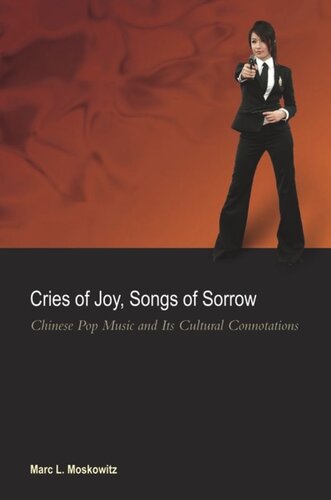

Most ebook files are in PDF format, so you can easily read them using various software such as Foxit Reader or directly on the Google Chrome browser.
Some ebook files are released by publishers in other formats such as .awz, .mobi, .epub, .fb2, etc. You may need to install specific software to read these formats on mobile/PC, such as Calibre.
Please read the tutorial at this link: https://ebookbell.com/faq
We offer FREE conversion to the popular formats you request; however, this may take some time. Therefore, right after payment, please email us, and we will try to provide the service as quickly as possible.
For some exceptional file formats or broken links (if any), please refrain from opening any disputes. Instead, email us first, and we will try to assist within a maximum of 6 hours.
EbookBell Team

4.7
66 reviewsSince the mid-1990s, Taiwan’s unique brand of Mandopop (Mandarin Chinese–language pop music) has dictated the musical tastes of the mainland and the rest of Chinese-speaking Asia. Cries of Joy, Songs of Sorrow explores Mandopop’s surprisingly complex cultural implications in Taiwan and the PRC, where it has established new gender roles, created a vocabulary to express individualism, and introduced transnational culture to a country that had closed its doors to the world for twenty years.
In his early chapters, Marc L. Moskowitz provides the historical background necessary to understand the contemporary Mandopop scene, beginning with the birth of Chinese popular music in the East Asian jazz Mecca of 1920s Shanghai. A brief overview of alternative musical genres in the PRC such as Beijing rock and revolutionary opera is included. The section concludes with a look at the manner in which Taiwan’s musical ethos has influenced the mainland’s music industry and how Mandopop has brought Western music and cultural values to the PRC. This leads to a discussion of Taiwan pop’s exceptional hybridity, beginning with foreign influences during the colonial period under the Dutch and Japanese and continuing with the country’s political, cultural, and economic alliance with the U.S. Moskowitz addresses the resulting wealth of transnational musical influences from the rest of East Asia and the U.S. and Taiwan pop’s appeal to audiences in both the PRC and Taiwan. In doing so, he explores how Mandopop’s "songs of sorrow," with their ubiquitous themes of loneliness and isolation, engage a range of emotional expression that resonates strongly in the PRC.
Later chapters examine the construction of male and female identities in Mandopop and look at the widespread condemnation of the genre by critics. Drawing on analyses and data from earlier chapters (including interviews with dozens of performers, song writers, and lay people in Taipei and Shanghai), Moskowitz attempts to answer the question: Why, if the music is as bad as some assert, is it so central to the lives of the largest population in the world? To answer, he highlights Mandopop’s important contribution as a poetic lament that simultaneously embraces and protests modern life.
Cries of Joy, Songs of Sorrow is a highly readable introduction to an important but understudied East Asian phenomenon. It will find a ready audience among scholars and students of Chinese and Taiwanese popular culture as well as musicologists studying transnational music flows and non-Western popular music.